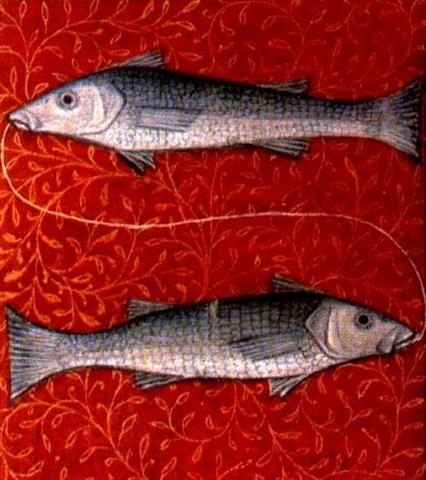|
R (Small
Washington Tablet)
8. It suddenly strikes me that the 10th and last star pillar in the Tahitian list - Polaris (Ana-nia) - had been given the description 'the pillar-to-fish-by'. Nika. 'Savage tribes knew the Pleiades familiarly, as well as did the people of ancient and modern civilization; and Ellis wrote of the natives of the Society and Tonga Islands, who called these stars Matarii, the Little Eyes: The two seasons of the year were divided by the Pleiades; the first, Matarii i nia, the Pleiades Above, commenced when, in the evening, those stars appeared on the horizon, and continued while, after sunset, they were above. The other season, Matarii i raro, the Pleiades Below, began when, at sunset, they ceased to be visible, and continued till, in the evening, they appeared again above the horizon. Gill gives a similar story from the Hervey group, where the Little Eyes are Matariki, and at one time but a single star, so bright that their god Tane in envy got hold of Aumea, our Aldebaran, and, accompanied by Mere, our Sirius, chased the offender, who took refuge in a stream. Mere, however, drained off the water, and Tane hurled Aumea at the fugitive, breaking him into the six pieces that we now see, whence the native name for the fragments, Tauono, the Six, quoted by Flammarion as Tau, both titles singularly like the Latin Taurus. They were the favorite one of the various avelas, or guides at sea in night voyages from one island to another; and, as opening the year, objects of worship down to 1857, when Christianity prevailed throughout these islands.' (Allen)
Surely the Tahitian word nia meant above. And what star
would be more above than the star at the north pole?
In the A text we have found that the beginning of side b
presumably should coincide with Arcturus in October 22 (a month
after equinox in September 22), and we should therefore now see
if we can put Polaris at the fishing bird illustrated in Aa8-66:
*18
Aa8-66
(1315)
Aa8-85
(664 + 670 = 1334)
Oct 2
(275)
Oct 21
(294)
"Aug 22
(234, *154)
"Sept 10
(253, *173)
*336
↔
416 - 80
→ 48
weeks (Dec 2, 336)
"March 11 (51 + 19 = 70 = 253 - 183)
*355 = *336 + *19 →
Dec 21 (355)
... In 1638 Johannes Holwarda determined a
period of the star's reappearances, eleven months; he is often
credited with the discovery of Mira's variability. Johannes
Hevelius was observing it at the same time and named it 'Mira'
(meaning 'wonderful' or 'astonishing,' in Latin) in 1662's
Historiola Mirae Stellae, for it acted like no other known
star. Ismail Bouillaud then estimated
its period at 333 days, less than one day off the modern
value of 332 days, and perfectly forgivable, as Mira is known to
vary slightly in period, and may even be slowly changing over
time ... I
have not listed the culmination date for Polaris (*26), but
since the Knot (Alrisha, α Piscium) was rising with the Sun at
*29,
we have reason to count to a date just a few days earlier than
December 7 (336 + 5 = 341,
*261) when Arisha culminated (at 21h). April 16 (= 19 - 3) should coincide with the right ascension day *26 (↔ 80 + 26 = 106) for Polaris. And the last glyph on side a of the C tablet was seemingly designed to refer to heliacal Polaris, we remember:
From my culmination list we can see that the distance which at Alcyone measured 135 days (136 days when counting from January 1 to heliacal Alcyone) is not a constant and certainly not so in December. However, from Schedir (*8) to Polaris (*26) we can count with 18 right ascension nights which therefore should give us a good approximation for the culmination date of Polaris, viz. November 18 (322) + 18 = 340 (December 6, *260 → 10 * 26). ... The correspondence between the winter solstice and the kali'i rite of the Makahiki is arrived at as follows: ideally, the second ceremony of 'breaking the coconut', when the priests assemble at the temple to spot the rising of the Pleiades, coincides with the full moon (Hua tapu) of the twelfth lunar month (Welehu). In the latter eighteenth century, the Pleiades appear at sunset on 18 November. Ten days later (28 November), the Lono effigy sets off on its circuit, which lasts twenty-three days, thus bringing the god back for the climactic battle with the king on 21 December, the solstice (= Hawaiian 16 Makali'i). The correspondence is 'ideal' and only rarely achieved, since it depends on the coincidence of the full moon and the crepuscular rising of the Pleiades ...
And, as if by chance, day 234 ("August 22, *154) - according to the era of Bharani - should coincide with Aa8-66, because October 2 (275) - 41 = 234. We have earlier figured out that Aa8-66 ought to be located where ideally the Full Moon should be in night number 416 - i.e. in "February 21 = "August 22 (234) + 183:
As I have explained in my table at "February 21 this was day 364 + 31 ("January) + 21 ("February) = 416 as counted from the beginning of the previous year, and 416 - 80 = *336. The current corresponding right ascension night should be *336 + *41 = *377, and *377 - *182 = *195 = 275 (October 2) ↔ "August 22 (234) + 41. This curious operation might possibly be somewhat easier to understand from a few tables:
So we seem to be able to translate the current date October 2 (275) into December 6 (340 = 275 + 65) by considering the effects of moving past December 31 (365, *285). ... As soon as one has mastered the elementary grammar and accidence of myth, and built up a small vocabulary, and learned to distinguish seasonal myths from historical and iconotropic myths, one is surprised how close to the surface lie the explanations, lost since pre-Homeric times, of legends that are still religiously conserved as part of our European cultural inheritance. For example, the various legends of the halcyon, or kingfisher which like the wren, is associated in Greek myth with the winter solstice. There were fourteen 'halcyon days' in every year, seven of which fell before the winter solstice, seven after, peaceful days when the sea was smooth as a pond and the hen-halcyon built a floating nest and hatched out her young. According to Plutarch and Aelian, she had another habit, of carrying her dead mate [†] on her back over the sea and mourning him with a peculiarly plaintive cry ...
This would hardly come into mind unless we were considering the
Sun absent days from the end of December until spring equinox in
March 20 (79).
... Ecclesiastically, the equinox is reckoned
to be on 21 March (even though the equinox occurs,
astronomically speaking, on 20 March in most
years) ...
79 - 65 (March 6) = a fortnight.
... Väinämöinen set about building a boat, but when it came to the prow and the stern, he found he needed three words in his rune that he did not know, however he sought for them. In vain he looked on the heads of the swallows, on the necks of the swans, on the backs of the geese, under the tongues of the reindeer. He found a number of words, but not those he needed. Then he thought of seeking them in the realm of Death, Tuonela, but in vain. He escaped back to the world of the living only thanks to his potent magic. He was still missing his three runes. He was then told by a shepherd to search in the mouth of Antero Vipunen, the giant ogre. The road, he was told, went over swords and sharpened axes. Ilmarinen made shoes, shirt and gloves of iron for him, but warned him that he would find the great Vipunen dead. Nevertheless, the hero went. The giant lay underground, and trees grew over his head. Väinämöinen found his way to the giant's mouth, and planted his iron staff in it. The giant awoke and suddenly opened his huge mouth. Väinämöinen slipped into it and was swallowed. As soon as he reached the enormous stomach, he thought of getting out. He built himself a raft and floated on it up and down inside the giant. The giant felt tickled and told him in many and no uncertain words where he might go, but he did not yield any runes. Then Väinämöinen built a smithy and began to hammer his iron on an anvil, torturing the entrails of Vipunen, who howled out magic songs to curse him away. But Väinämöinen said, thank you, he was very comfortable and would not go unless he got the secret words. Then Vipunen at last unlocked the treasure of his powerful runes. Many days and nights he sang, and the sun and the moon and the waves of the sea and the waterfalls stood still to hear him. Väinämöinen treasured them all and finally agreed to come out. Vipunen opened his great jaws, and the hero issued forth to go and build his boat at last ...
|
||||||||||||||||||||||||||||||||||||||||||||||||||||||||||||||||||||||||||||||||||||||||||||||||||||||||||||||||||||||||||||||||||||||||||||||||||||||||||||||||||||||||||||||||||||||||||||||||||||||||||||||||||||||||||||||||||||||||||||||||||||||||||||||||||||||||||||||||||||||||||||||||||||||||





.jpg)